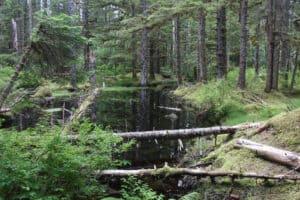Willow trees, also called osiers and sallows, are part of the Salix genus, which features around 400 species. Most species in this genus are deciduous (they shed their leaves in the autumn) and can be found in temperate and cold regions. Willows are known for holding watery bark sap in abundance and for their tough wood and large roots. The latter is responsible for the tree’s general toughness. While some species are called osiers and sallows, the terms refer to different types of willow. Osiers are shrubs with narrow leaves, while sallows are specimens with broad leaves.
Since there are too many species of willow trees and a single article cannot possibly cover them all, we’ve decided to talk about the most interesting types of willow trees. Without any further ado, let’s discover the most interesting and different types of willow trees!
1. Salix acutifolia
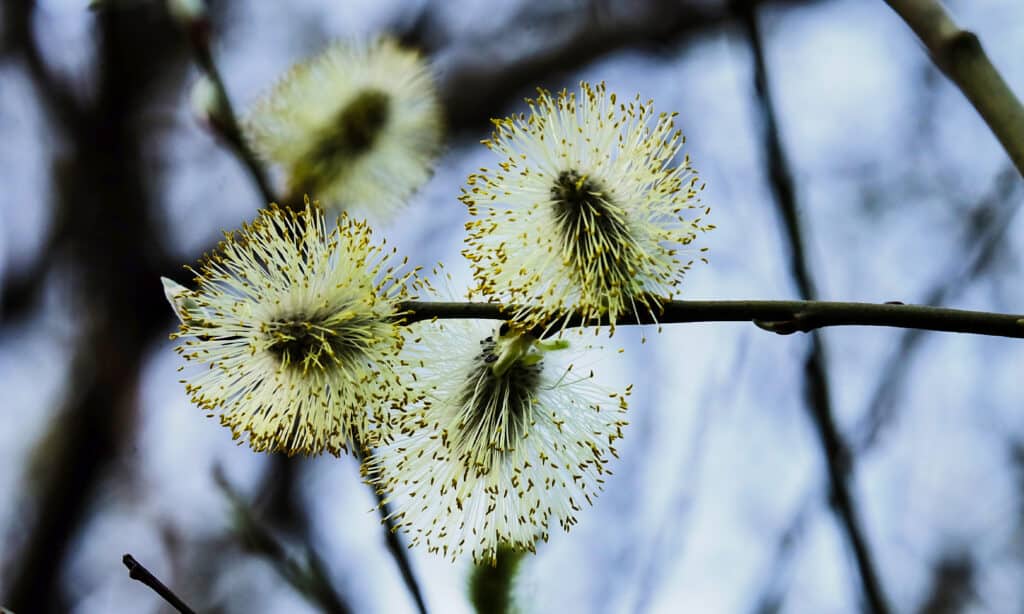
The Siberian violet willow is known among willow enthusiasts for its deep purple with white bloom shoots.
©Ollga P/Shutterstock.com
| Salix acutifolia | |
|---|---|
| Nicknames | Siberian violet-willow, long-leaved willow, sharp-leaf willow |
| Region | Russia, eastern Asia |
| Type | Deciduous |
| Height | About 33 feet |
| Interesting feature | Deep purple with white bloom shoots |
| Conservation status | Least Concern |
Salix acutifolia is native to eastern Asia and Russia and is known among willow enthusiasts for its deep purple with white bloom shoots and for its male catkins. These are silvery in color and feature gold anthers, in contrast with female catkins, which are green.
If you come across a Siberian violet willow during early spring, you have a good chance of spotting the aforementioned catkins. This willow species can be either a tree or a shrub and usually grows 39 feet wide and around 33 feet tall.
2. Salix atrocinerea
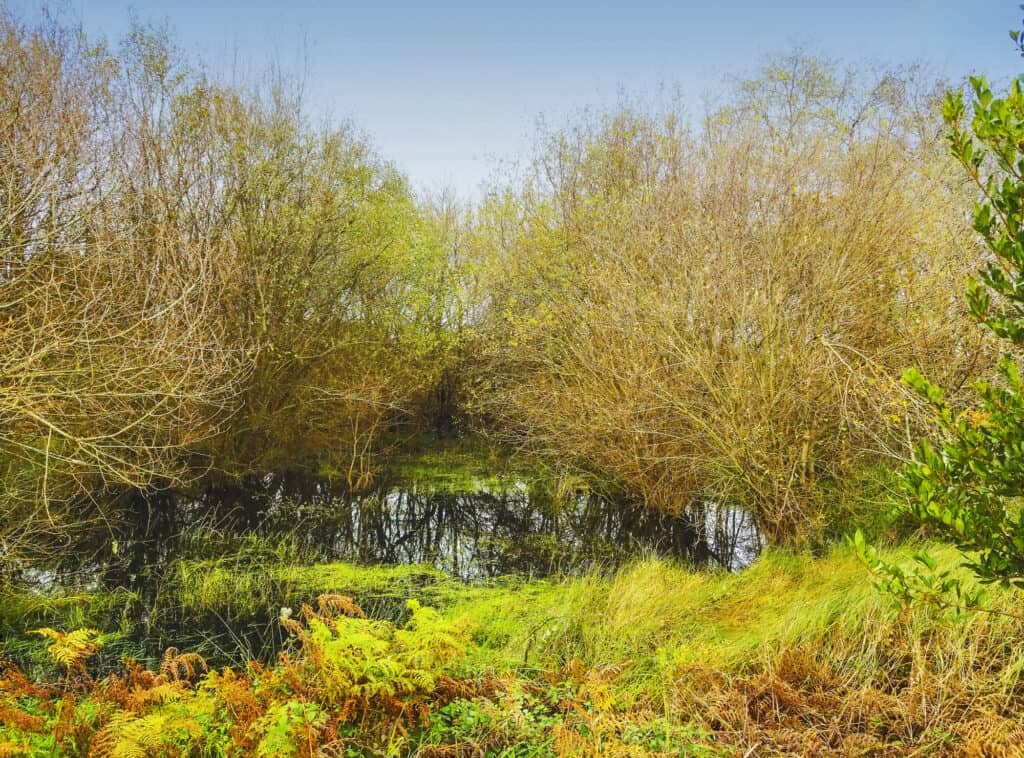
The grey willow features bright yellow-green catkins.
©iStock.com/arousa
| Salix atrocinerea | |
|---|---|
| Nicknames | Grey willow, large gray willow |
| Region | Western Europe, North Africa, and Mediterranean islands, common in the Iberian Peninsula |
| Type | Deciduous |
| Height | About 39 feet |
| Interesting feature | Prefers acidic soil and is often found near the sea, on beaches, and even on islands |
| Conservation status | Least Concern |
Salix atrocinerea is found all around Western Europe – from the UK to France, Spain, Portugal, Tunisia, and even Corsica. It features bright yellow-green catkins and is known for its resilience. For example, you can come across this species on beaches and even on remote islands.
It prefers acidic soil, so this willow can grow in gravel or sandy soil and is commonly found around streams, rivers, meadows, and ponds. To emphasize its resilience, the grey willow grows undisturbed from sea level to altitudes of up to 6,561 feet.
3. Salix babylonica
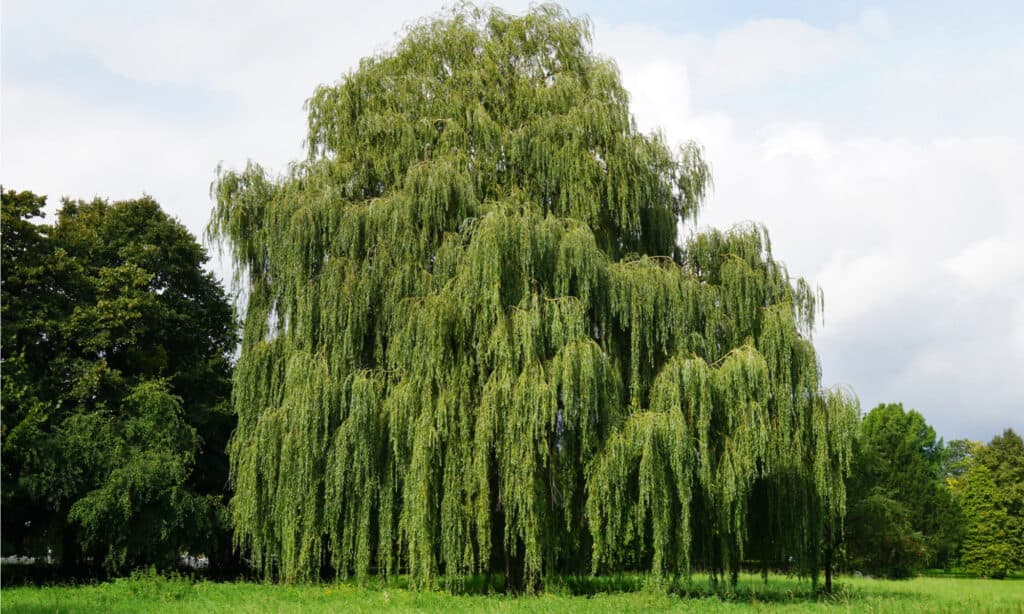
The best time to gaze at a weeping willow is early spring when the tree produces its catkins.
©Axel Bueckert/Shutterstock.com
| Salix babylonica | |
|---|---|
| Nicknames | Babylon willow, weeping willow |
| Region | Northern China |
| Type | Deciduous |
| Height | About 66-82 feet |
| Interesting feature | Spirally arranged, alternate leaves that are light green in summer and turn gold-yellow in autumn. |
| Conservation status | – |
Native to northern China, the babylon willow has been cultivated throughout Asia for thousands of years. Thanks to this, it has easily reached Europe via the main trade routes of ancient times, among which was the famous Silk Road.
This willow is known as a fast-growing tree, but especially for its spirally arranged leaves that change color when autumn comes. The best time to gaze at a weeping willow is early spring when the tree produces its catkins – elongated, curved, and bright yellow flowers.
4. Salix bonplandiana
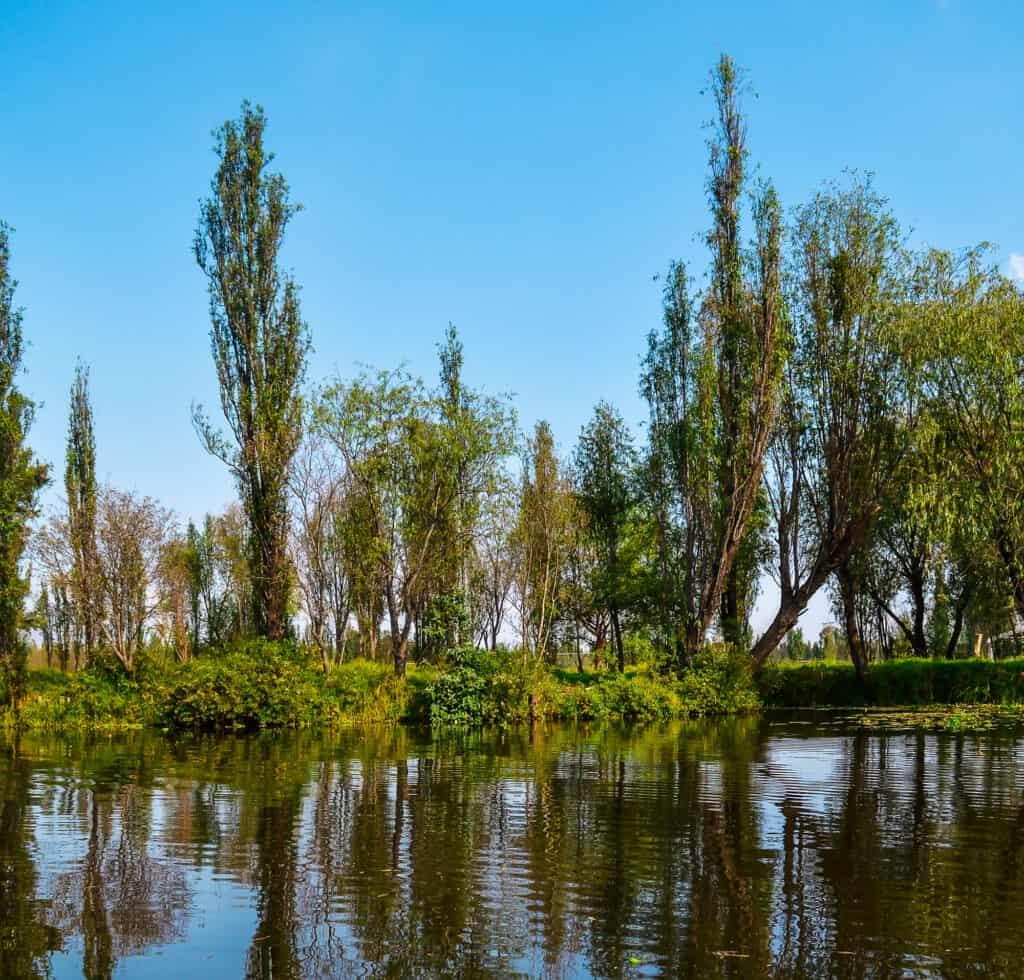
The Bonpland willow can be found throughout the southern parts of Mexico and central Guatemala.
©Faviel_Raven/Shutterstock.com
| Salix bonplandiana | |
|---|---|
| Nicknames | Bonpland willow, ahuejote (Spanish) |
| Region | Southern and southwest Mexico, central Guatemala |
| Type | Deciduous |
| Height | About 32 feet |
| Interesting feature | Fast growth rate |
| Conservation status | Least Concern |
Another different type of willow tree is the Bonpland willow which can be found throughout the southern parts of Mexico and central Guatemala. It is a part of the Mexican Sierra Madre Occidental cordillera, but it is also common in other areas. The willow is known for its slender build and fast growth rate.
Another interesting feature is that the willow can grow in wet soils near streams, mountains, and deserts. On the other hand, the Bonpland willow cannot grow in the shade.
5. Salix caprea
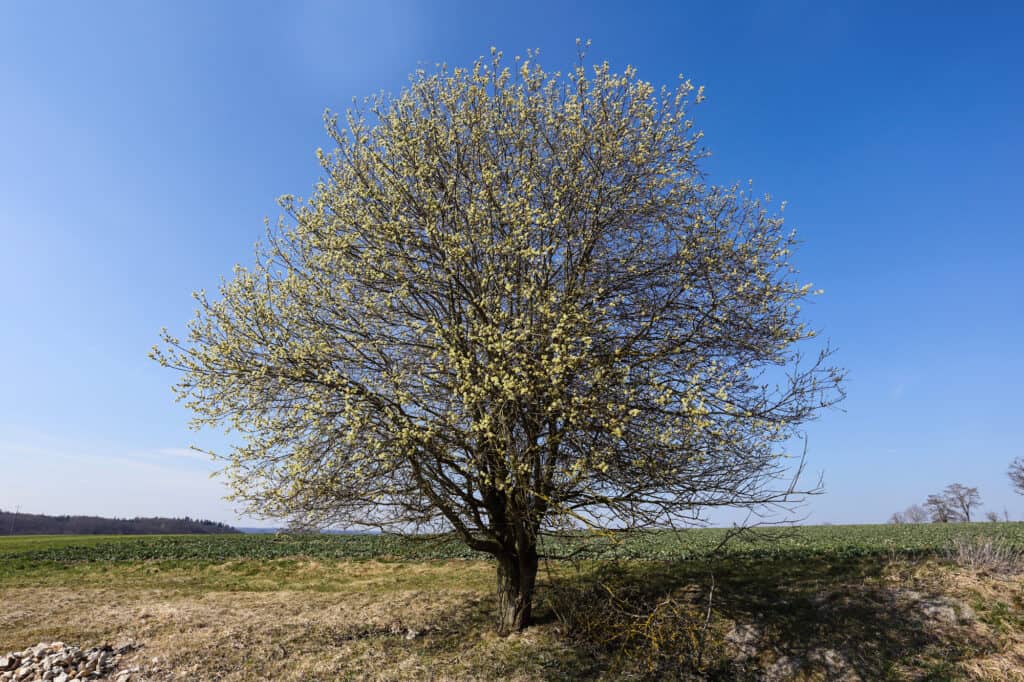
There are two varieties of
Salix caprea, one of which can grow at high altitudes, especially in the mountains (such as the Alps and the Carpathians).
©Bildagentur Zoonar GmbH/Shutterstock.com
| Salix caprea | |
|---|---|
| Nicknames | Goat willow, great sallow, pussy willow |
| Region | Europe, western and central Asia |
| Type | Deciduous |
| Height | About 26-33 feet |
| Interesting feature | Soft and silky flowers with silvery catkins |
| Conservation status | Least Concern |
The name of this willow species, Goat willow, comes from the first illustration depicting it, where a goat was inspecting this small deciduous tree. It reaches heights of about 26 to 33 feet and features silvery catkins that can be enjoyed in early spring.
There are two varieties of Salix caprea, one of which can grow at high altitudes, especially in the mountains (such as the Alps and the Carpathians). This particular variety also grows higher than the common species (S. c. var. caprea). S. c. var. sphacelata grows up to about 59-65 feet.
6. Salix humboldtiana
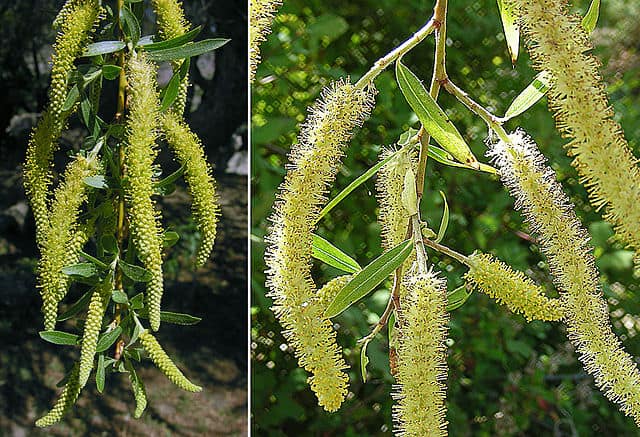
Humboldt’s willow is known for its resilience and adaptability.
©Dick Culbert from Gibsons, B.C., Canada / CC BY 2.0 – License
| Salix humboldtiana | |
|---|---|
| Nicknames | Humboldt’s willow |
| Region | North and South America |
| Type | Evergreen or deciduous (depending on the climate) |
| Height | About 82 feet |
| Interesting feature | Lanceolate, light green leaves that can grow up to 0.5 feet long and turn yellow in autumn |
| Conservation status | Least Concern |
Humboldt’s willow grows along watercourses and is easily identified by its elongated yellow or green catkins that grow up to about 3.9 inches long. The species can be evergreen or deciduous – this aspect is influenced by the climate the willow is growing in.
Like many species of willow, Salix humboldtiana is known for its resilience and adaptability. It can grow in temperate, subtropical, and tropical climates at altitudes of up to 10,800 feet.
7. Salix laevigata
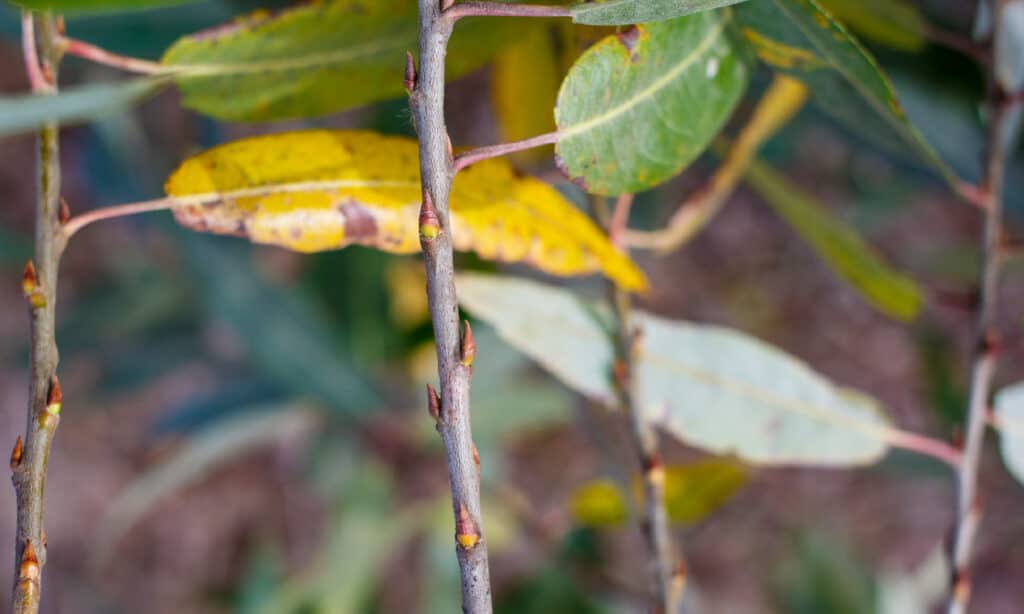
The red willow can be found only in the southwestern part of the US and north of Baja California.
©iStock.com/Jared Quentin
| Salix laevigata | |
|---|---|
| Nicknames | Red willow, polished willow |
| Region | Southwestern United States, northern Baja California |
| Type | Semi-deciduous |
| Height | About 45 feet |
| Interesting feature | Reddish and flexible twigs |
| Conservation status | – |
The red willow can be found only in the southwestern part of the US and north of Baja California. It can also be found deeper within the continent, but only occasionally. You can easily find red willows in the mentioned areas by following a river or in areas with increased soil moisture.
Its main characteristic is the red twigs, which also help identify the species. The catkins of the red willow turn into tufts of cottony seeds grouped and transported by the wind. You can observe this phenomenon in spring for about two to three weeks.
8. Salix mesnyi
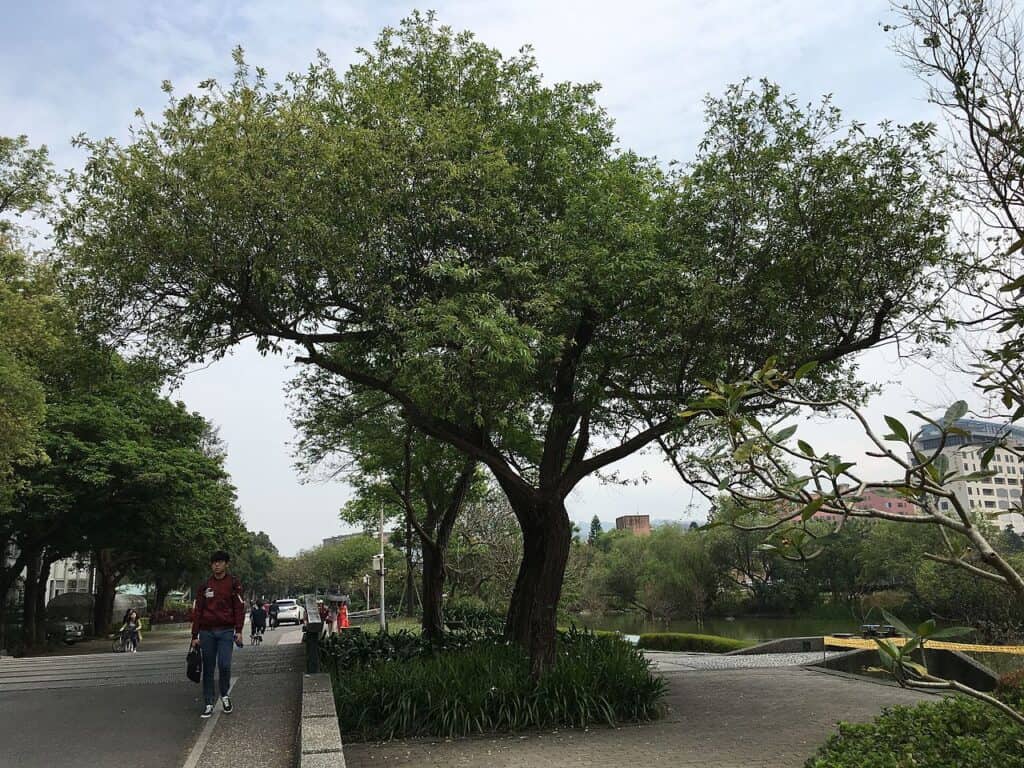
The
Salix mesnyitree can be found only in China, Vietnam, and Taiwan.
©Clins210 / CC BY-SA 4.0 – License
| Salix mesnyi | |
|---|---|
| Nicknames | – |
| Region | Southern and eastern China, Vietnam, Taiwan |
| Type | Deciduous |
| Height | About 33 – 49 feet |
| Interesting feature | Salix mesnyi flowers don’t feature calyx and petals |
| Conservation status | Least Concern |
Salix mesnyi is usually found near water but is also commonly planted in parks and cities. It is a rather tall species and resembles more a random tree than a willow – meaning that its branches and leaves are not lowered. This species can be found only in China, Vietnam, and Taiwan.
9. Salix pierotii
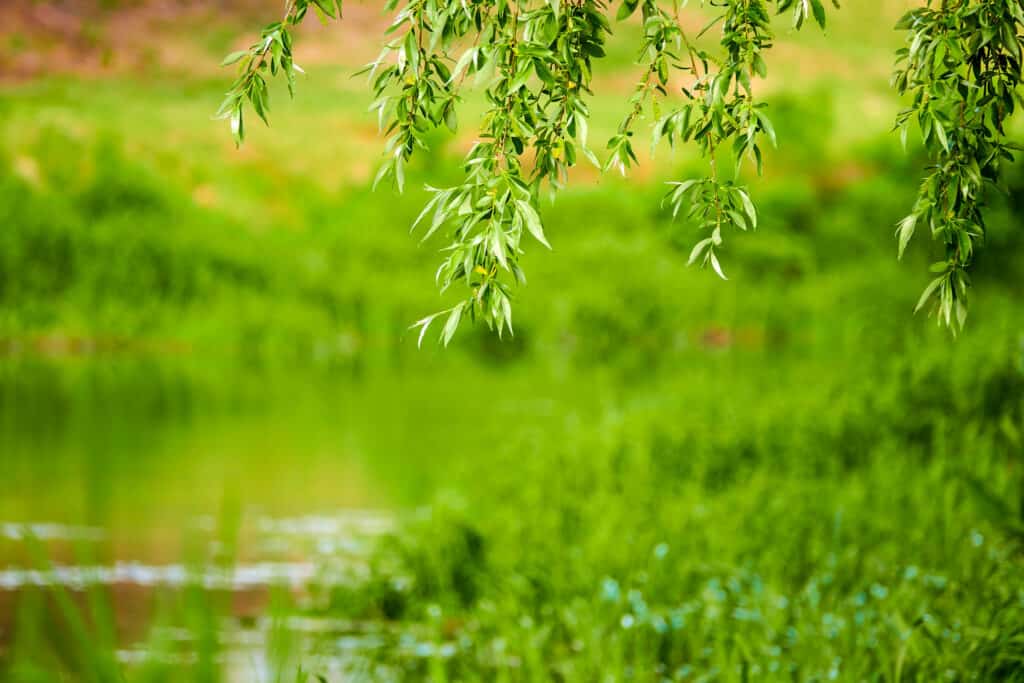
The
Salix pierotiiis known as the famous Korean willow.
©BestPhotoStudio/Shutterstock.com
| Salix pierotii | |
|---|---|
| Nicknames | Korean willow |
| Region | Northeast China, eastern Russia, Korea, Japan |
| Type | Deciduous |
| Average height | About 26 feet |
| Interesting feature | Twisted wood and heavily deformed trunk |
| Conservation status | Least Concern |
Salix pierotii is another different types of willow trees and known as the famous Korean willow. It is featured in almost any picture depicting Korean nature as having a twisted trunk of irregular shapes. Because of this, this willow species is often used in Japan as a natural border line between territories, especially on farms. Its wood is not turned into tools or timber.
10. Salix arctica
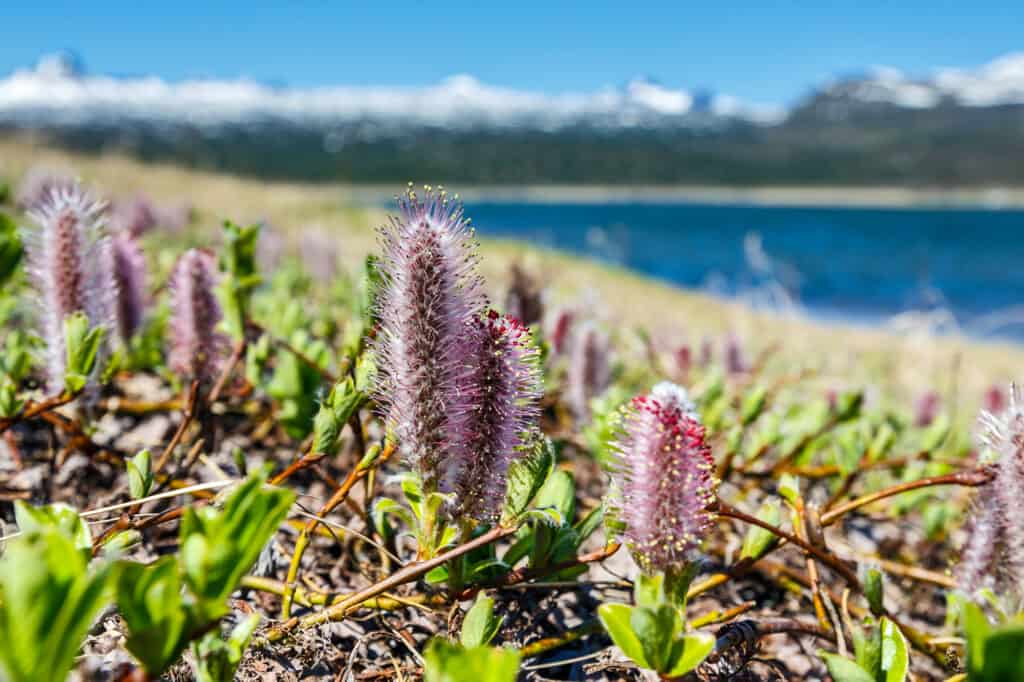
Arctic willow is known for its resilience and ability to live a long life.
©iStock.com/geyzer
| Salix arctica | |
|---|---|
| Nicknames | Arctic willow |
| Region | Arctic climates, tundra |
| Type | Deciduous |
| Height | 6 – 10 inches |
| Interesting feature | It is a creeping willow and produces red (female) and yellow (male) catkins. |
| Conservation status | – |
Even though not a tree, this species is part of the Angiosperms clade and sits under the Salix genus. As such, while it is a creeping willow and is barely a couple of inches high, it is, technically, a willow.
Salix arctica is known for its resilience and ability to live a long life. A 236-year-old specimen was found in Greenland. The species is adapted to severe arctic climates.
11. Salix integra
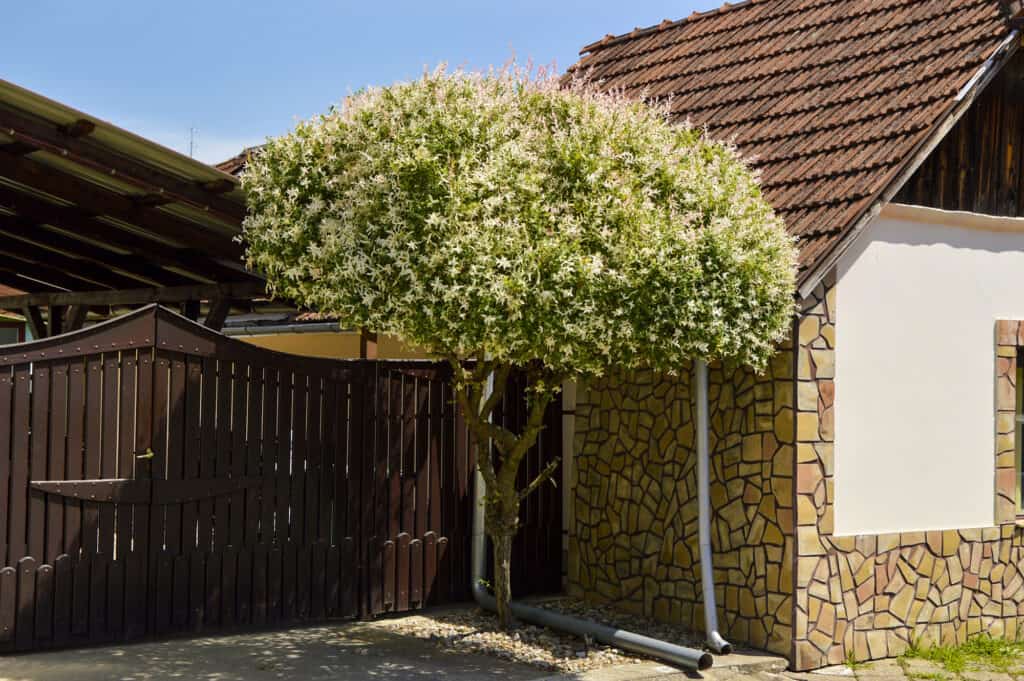
Dappled willow is known for its foliage – green combined with yellow and white.
©iStock.com/Jana Milin
| Salix integra | |
|---|---|
| Nicknames | Dappled willow (cultivar) |
| Region | North-eastern China, Japan, Korea, south-eastern Russia |
| Type | Deciduous |
| Average height | About 6.5-19.6 feet |
| Interesting feature | Leaves are arranged in opposite three pairs or whorls. Usually, willow leaves are arranged in alternate pairs. |
| Conservation status | – |
Another different type of willow tree is the dappled willow (Salix integra) which is known for its foliage – green combined with yellow and white, making for a unique look in a willow. The tree’s shoots are red or yellow, while its bark is grayish-green. It’s not a particularly tall species, as it can barely reach heights of 19.6 feet.
Its nickname comes from the species’ designed cultivar – Hakuro Nishiki (meaning dappled willow). This showcases the fact that this willow is mainly an ornamental plant, and its interesting foliage is sought after by many people.
Up Next:
- How Many Trees Are In The World?
- Discover the 12 Fastest-Growing Trees You Can Plant
- The 10 Largest Trees In The World
The photo featured at the top of this post is © Axel Bueckert/Shutterstock.com
Sources
- RHS, Available here: https://www.rhs.org.uk/plants/92968/dragon-s-claw-willow/details
Thank you for reading! Have some feedback for us? Contact the AZ Animals editorial team.



